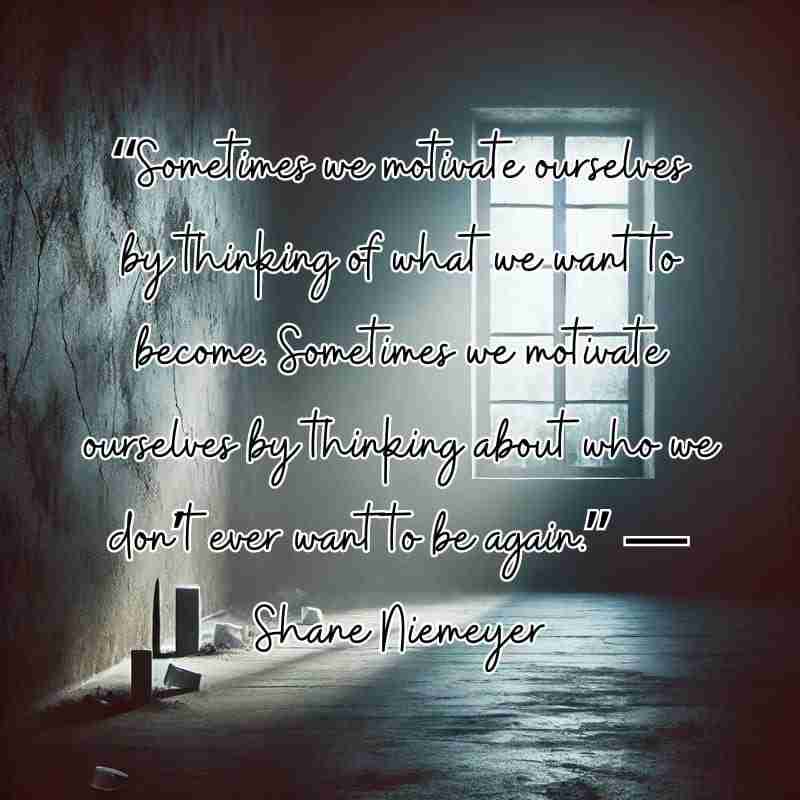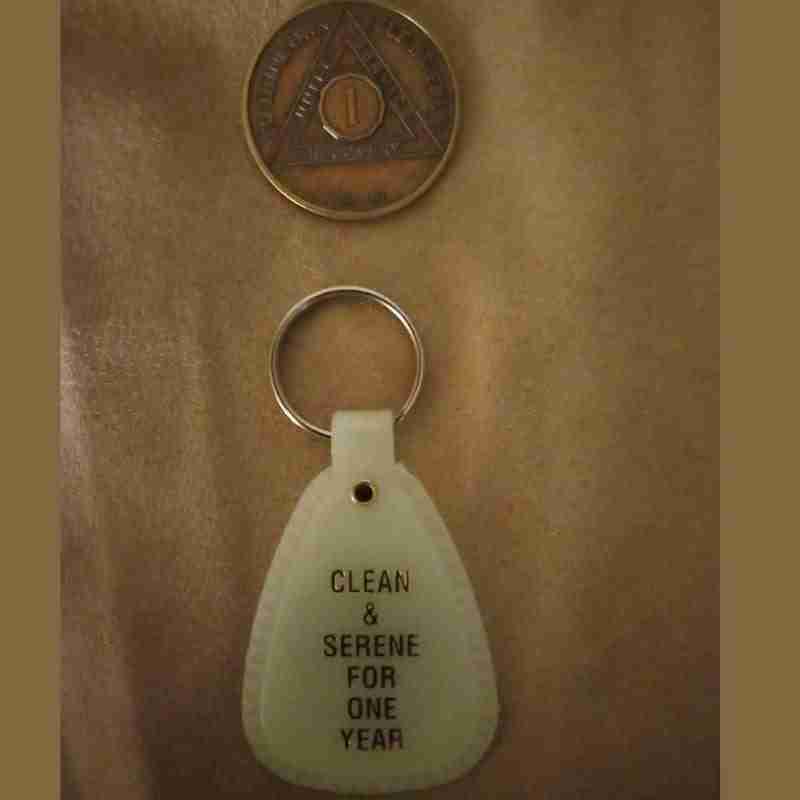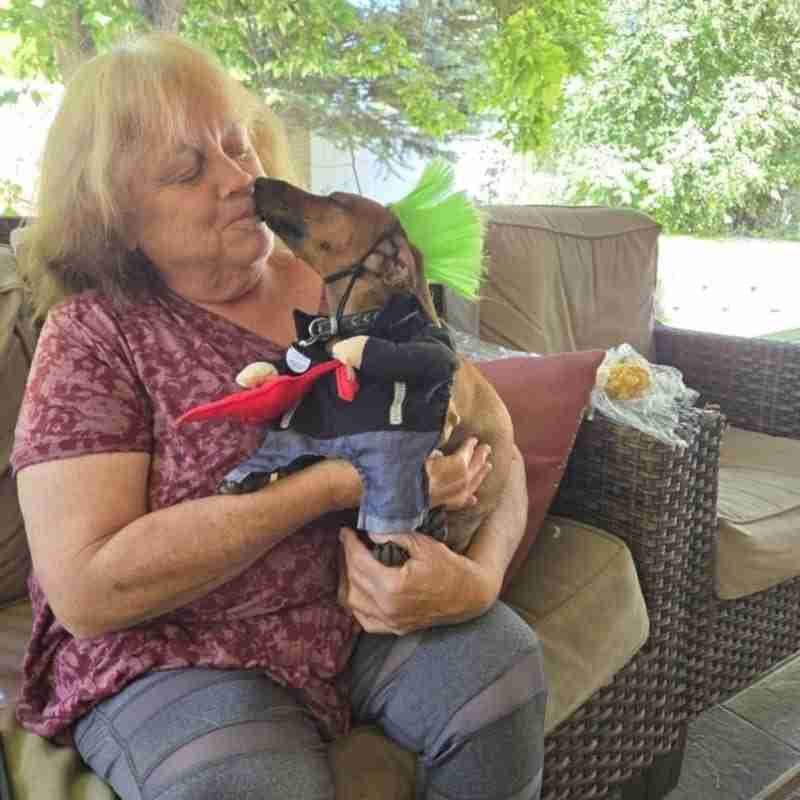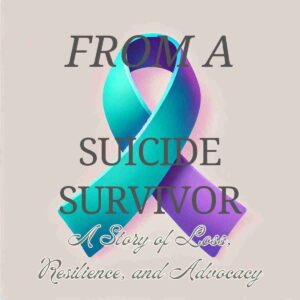Patty was not always a meth addict. When I sat with her, it shocked me to learn that her first time using meth was at 46.
She said she had been “anti-drug” all of her life. If you were doing drugs, she wanted nothing to do with you.
That aversion to drugs was because Patty’s mom had been an addict. When I asked her about that, I heard one of the saddest stories I have ever heard. Unfortunately, I have heard and lived through a few…
Patty’s Mother Struggled With Drug Abuse Until the Day She Died
Patty’s memories of her mother are seared into her mind, particularly the day the fire took her life.
The image that haunts her the most is of the handprints—faint, desperate marks on the walls her mother made while struggling to find a way out of the burning house.
She finally found the door. However, years of drug abuse had weakened her to where she couldn’t get the door open.
When the fire rescue found her, she wasn’t alone; Patty’s dog was lying beside her mom when they were found.
As I first listened to Patty’s story, she said a few times, “I have abandonment issues.” We had talked for about 30 minutes when she recounted this part of her past. With this knowledge, it became easier to see how she would feel that way.
She says it was at that moment that she became anti-drug. She vowed never to let addiction touch her life. For decades, she held onto that vow, living clean, avoiding substances, and steering clear of anyone who didn’t.
How a Little Peer Pressure Led to Patty’s Meth Addiction
At 46 years old, the ironclad resolve that had defined her life crumbled. It started innocently enough—a diet challenge with friends from work, a desire to lose weight quickly. Someone mentioned methamphetamine, claiming it would melt away the pounds faster than anything else.
Patty, who had tried every diet under the sun, was hesitant. Yet, curiosity and desperation got the better of her. In the first week, she lost 60 pounds (or at least felt like she did). The pounds fell off, but so did everything else. In what felt like the blink of an eye, she lost her job, her home, and herself to the drug.
Patty’s life became a whirlwind of addiction, dealing meth to support her habit. She started associating with dangerous people who dragged her deeper into the darkness. She was no longer the person who had once fiercely rejected drugs.
Her workplace became a network of users and dealers, with even the owners involved. As her addiction grew, so did her entanglements. Her husband, who had once been clean, joined her in using. Their marriage quickly spiraled into a chaotic mess of infidelity and substance abuse.
When I asked her about the current state of her marriage, she said she had no idea. She hasn’t heard from him since 2006, so she doesn’t know if they are still married, if he is in prison, or if he is even alive.
Reaching the First Turning Point in Her Road to Recovery
The turning point came when her workplace started drug testing. They had said that they would send anyone who did not pass to rehab. Patty paid people for clean urine and watched as some of her coworkers were, in fact, sent to rehab.

Eventually, she became tired and worn down. This time she took the test, knowing she would fail, hoping they’d send her to rehab. Instead, she was fired. With no job, no purpose, and a mounting addiction, Patty’s life took a nosedive.
She began running with dangerous crowds, people with guns, and nothing to lose. She became involved in major drug distribution, moving large quantities of meth, and eventually, she was arrested in Denver.
Patty’s time in jail was both a punishment and a reprieve. It kept her off drugs for a while. However, when she returned to Billings, she stumbled back into old patterns.
Old connections, old habits—they were waiting for her, and she was too lonely to resist. The cycle continued: use, get arrested, go to jail, get out, and use again. Each time she returned to meth, it was like slipping into a familiar but deadly routine.
Meth Addiction and Federal Prison
Patty’s descent into meth addiction led her to a revolving door of federal prisons. Each stint was a testament to the grip that the drug had on her life. The first time she was arrested, it was in Denver, where she was caught during a drug deal gone wrong.
That arrest kept her in Colorado for five years. During this period she stayed clean, away from the environment that had pulled her under. But when she returned to Billings, Montana, old habits quickly resurfaced.
Another Turning Point
Back in her hometown, Patty couldn’t escape the pull of her old life. She reconnected with former associates and soon found herself back in the drug trade. It wasn’t long before she was caught again, this time leading to a federal indictment for methamphetamine distribution.
She was sentenced to ten years in prison, which she mostly served at the Federal Correctional Institution in Waseca, Minnesota. Patty spent seven years there, struggling with the realities of incarceration and the isolation it brought.
Her time in Waseca was followed by a transfer to the Federal Correctional Institution in Pekin, Illinois, where she spent her final two years. The transfer was due to her security level being downgraded, but it also marked the beginning of a slow shift in her mindset.
Despite the availability of drugs in prison—a temptation she found surprisingly easy to access—Patty began to engage with the rehabilitation programs offered to her.
Even after her release, the cycle of addiction wasn’t easily broken. Patty returned to the streets, quickly finding herself back in the clutches of meth. She was re-arrested and sent back to federal prison in Pekin, a place she had hoped never to see again.
Each time she was released, she vowed to change. However, the lure of the drug and the loneliness she couldn’t shake kept pulling her back.

This pattern of relapse and re-incarceration was a painful testament to the power of addiction. Patty’s life became a series of attempts to start over, only to find herself back in the same destructive cycle.
The Moment Patty Started Making Different Choices About Her Drug Addiction
It wasn’t until her last stint in Pekin that something began to shift—a change that would set her on a different path. She got involved with the Residential Drug Treatment Program. This time, she wasn’t just playing the game to get out.
Patty began to realize that her addiction wasn’t just about the drugs. It was about the loneliness that had plagued her for most of her life. She started attending NA meetings, got involved with church programs, and for the first time, she faced her demons head-on.
However, the depth of Patty’s loneliness often became overwhelming, driving her to the brink of despair. There were moments when the isolation was so crushing that she saw no way out. One of those moments came during a relapse in 2022.
Cornered and Seeing No Way Out
Feeling abandoned and lost, she checked into a hotel room with a plan to end her life. Her beloved dog, Brick, had been her last goodbye. She had taken him to stay with a friend, knowing she couldn’t take him with her.

The police found her, and the officer spoke to her on the phone. He asked her if she was going to come down or if he had to go and get her. She said she would be coming down and then swallowed 90 Ambien pills. She remembers going downstairs and being handcuffed.
Her next memory is when she woke up in the hospital, intubated, with tubes down her throat, furious to be alive.
Another time, Patty contemplated “suicide by cop.” The idea seemed like a way out, a way to escape the relentless pain of her existence. She was cornered by a police officer named Hallum, and in a moment of desperation, she asked him if he would shoot her if she ran.
When he refused, her despair only deepened. “I wanted him to kill me, and he wouldn’t do it. Son of a bitch,” she recalled with a mix of dark humor and lingering pain. She wants to thank him for saving her life, too.
Making Different Choices in Her Meth Addiction Treatment Plans
Even in her lowest moments, when she felt utterly alone, something kept pulling her back from the edge—perhaps it was her survival instinct, or maybe it was the thought of the people she might leave behind.
After her release, Patty knew she needed a different environment to avoid falling back into old habits. She chose to go to a halfway house, Passages, where she could have structure and support. There, she found a community that helped her stay clean.
The Job She Credits With Saving Her Life
At the halfway house, she was required to find a job. But this time, Patty didn’t want just any job; she wanted something that would give her a sense of purpose, something that would keep her grounded.
Having always had a deep love for animals—perhaps rooted in the trauma of losing her dog in the fire with her mother—she decided to apply at a local doggy daycare and boarding facility.
Getting the job was far from straightforward. Patty’s past was full of red flags for any employer, especially one that required trust and responsibility.
When she arrived for the interview, she was terrified. The man sitting across from her wasn’t just anyone; he was a former DEA agent who had arrested her during one of her many run-ins with the law.
The memory of him was hazy—blurred by the countless interactions she had had with law enforcement over the years—but her fear was palpable.
To her surprise, he gave her a chance, telling her, “Don’t you let me down,” a phrase that echoed in her mind long after she left the interview. He is a no-nonsense kind of person, and Patty knew he wasn’t just giving her a job; he was giving her a lifeline.
Would She Grab Onto It?
The weight of that responsibility was both intimidating and motivating. She had never been given such an opportunity, especially not by someone who knew the depths of her past.
Patty began by cleaning kennels, a physically demanding task. But she didn’t mind. For the first time in years, she felt a sense of purpose. The dogs, especially, became her therapy.
When she was assigned to the quieter, more isolated yards—like yard six—she would sit with the animals, talking to them, crying with them, and finding solace in their silent companionship.
As time went on, Patty’s role grew. She proved herself to be reliable, dedicated, and genuinely passionate about the work. Patty thrived in this environment, where she could channel her nurturing instincts into caring for her puppies—or babies as she refers to them.
It became more than just a job; it was a place of healing for Patty.
The structure and routine of her work there, combined with the unconditional love of the animals, gave her a reason to stay clean. It became a space where she could rebuild her life, one day at a time, surrounded by beings who needed her as much as she needed them.
Reaching a Significant Milestone in Patty’s Meth Addiction Journey
On August 22, 2023, Patty celebrated a significant milestone: one year clean. She had been working at the doggy daycare for about five months by then, and she knew that the job had played a crucial role in her sobriety.

On that day, she radioed the man who had taken a chance on her and asked him to come to the yard where she worked. With tears in her eyes, she thanked him, telling him that she would never have made it this far without the opportunity he had given her.
Working didn’t just provide Patty with a paycheck; it gave her a new identity, one that wasn’t tied to her past mistakes. It offered her a way to contribute to something meaningful, to take care of others when she had struggled to take care of herself.
And most importantly, it gave her a reason to keep fighting, to keep choosing life over the darkness that had once consumed her.
The other daycare owner, the former DEA agent’s wife, is always at the facility, and she and Patty are extremely close. Patty turned to her when she got sick earlier this year, and once again, her job provided her with more than just money. Patty has people who love and care about her.
What Keeps Patty Choosing to Stay Clean Everyday
Her dog, Little Man, became her anchor. She and a friend had adopted him with the agreement that if either relapsed, the other would take custody. Patty never let go of Little Man, even when her friend fell back into using. He became the reason she stayed clean, the one thing she refused to lose.

Throughout her journey, Patty had to confront the guilt, shame, and other negative emotions that had been festering inside her for years. She felt guilty about her children, who had grown distant because of her addiction, and about the friends she had dragged down with her.
She felt abandoned and alone after losing her mother and childhood dog in the fire, a trauma that had driven her obsession with caring for animals.
The Role Loneliness Plays in Meth Addiction
Studies have shown that loneliness is a significant factor in addiction, and Patty’s story is a testament to that.
The isolation she felt after her mother’s death, the loneliness that crept in during her years of sobriety, and the connections she formed with fellow addicts all played a role in her descent into meth use. But it was also the community she found in recovery that helped her climb out of the pit she had fallen into.
Today, Patty is clean, but the scars of her addiction remain. She still struggles with the loneliness that drove her to drugs in the first place, but now she knows she’s not alone.
She’s found a support system in her meetings, her job, and her dog, Little Man. And she’s working on forgiving herself for the years she lost to meth, just as she finally forgave her mother for the fire that took her life.

How to Support Someone You Know Who Has a Methamphetamine Addiction
Patty’s story is a reminder that addiction is not just about drugs; it’s about the pain and loneliness that drive people to use in the first place. It’s about the communities we build, the connections we form, and the love that keeps us going, even in our darkest moments.
And it’s about finding the strength to keep fighting, one day at a time.
As I sat with Patty, it got me thinking about how she has no idea how the people who know her see her. We all want the best for her. It is my hope that she can begin to rewrite some of her story. Instead of the abandoned little girl, she is the warrior who survived a tragedy.
Instead of ‘a meth addict,’ she is someone who is who is doing something that not everyone can. The stories we tell ourselves hold power, and we are the only ones who can change the narrative. She is editing her life story as we speak, and it is going to be a masterpiece.
What to Look For
Supporting a loved one who is struggling with methamphetamine addiction can be challenging and emotionally taxing, but it’s crucial to understand the complexities of meth addiction and the ways you can help.
Meth, or crystal methamphetamine, is an extremely addictive stimulant substance that impacts the central nervous system, leading to severe health effects such as increased risk of heart problems, mood swings, violent behavior, and significant dental issues like “meth mouth.”
One of the first signs of meth addiction can be drastic weight loss, as methamphetamine is often misused for its appetite-suppressing effects.
Chronic methamphetamine users may also exhibit impaired verbal learning, psychotic symptoms, and intense cravings that drive them to seek more meth, despite the negative consequences.
The physical appearance of someone using meth may change dramatically, with noticeable dental problems, gum disease, and other signs of health deterioration.
If you suspect someone you know is struggling with meth use, it’s important to approach the situation with empathy and understanding. Meth withdrawal symptoms can be extremely uncomfortable, including depression, fatigue, and intense cravings, which make quitting on their own difficult.
Encouraging them to seek professional help is vital. Meth addiction treatment often involves medical detox to safely manage withdrawal symptoms, followed by cognitive behavioral therapy to address the underlying causes of drug abuse.
Support groups and mental health services can provide ongoing assistance and a community for those recovering from meth addiction.
Family members play a key role in recovery by offering support and understanding without enabling the behavior. Understanding that addiction is a complex mental illness and not simply a lack of willpower can help you approach your loved one with the compassion they need.
Resources to Help Someone You Love Cope With Their Meth Addiction
The National Institute on Drug Abuse and the Substance Abuse and Mental Health Services Administration are excellent resources for learning more about treatment options and the effects of meth.
Remember, recovery is a long-term process, and your support can make a significant difference in your loved one’s journey to reclaim their life from methamphetamine use disorder.
Do you love and care for someone who is a meth addict? Do you have a meth addiction? Share your experiences in the comment section below.


























Patricia Ann, I am asking and sending you healing prayers and positive energy, sweetie; and all my love. I am so very proud of you!
Thanks so much for reading and leaving a comment! We are so proud of her, too! Please take a moment to sign up for the newsletter, so you can read more inspiring stories.
Bunkie!!!
Patty, your story is incredibly heart-wrenching and undeniably genuine. Many of us have gone through similar yet unique experiences, and listening to your journey all these years has been something I’ve always wanted to support you through. However, I knew that you were the only one who could truly do that for yourself. I am immensely thankful that you were my first bunkie and my initial friend in prison. I am exceedingly proud of you for bravely opening up and sharing your truth! It brings me immense joy to celebrate your one year of sobriety. You truly deserve to lead a beautiful life, and that can only come through recovery. I deeply miss you and will always love you.
With love,
Kathy Hellen
Thanks for leaving such a wonderful comment! We appreciate you coming to read Patty’s story. Please take a moment to sign up for our newsletter so you can stay up to date on more inspiring stories.
Patty. You are such a beautiful light. You have no idea the role you played in my life. I covered up well, the loneliness and shame I was in as well. You were always there for me. Not even regarding using, just to keep me safe- sometimes the only person I could rely on to feel and be safe, you Always had my back. I am so proud of you. This made me cry. I just love you so much and am so PROUD of you my friend. I am so grateful that you found your way back to the light!
We are so glad Patty inspires you! Thanks for reading and leaving a comment. Please take a moment to sign up for our newsletter to read more inspiring stories!
Oh, Patty,
My heart breaks for you and also feels proud of you for taking such giant steps to move forward. Prayers you will continue on this path.